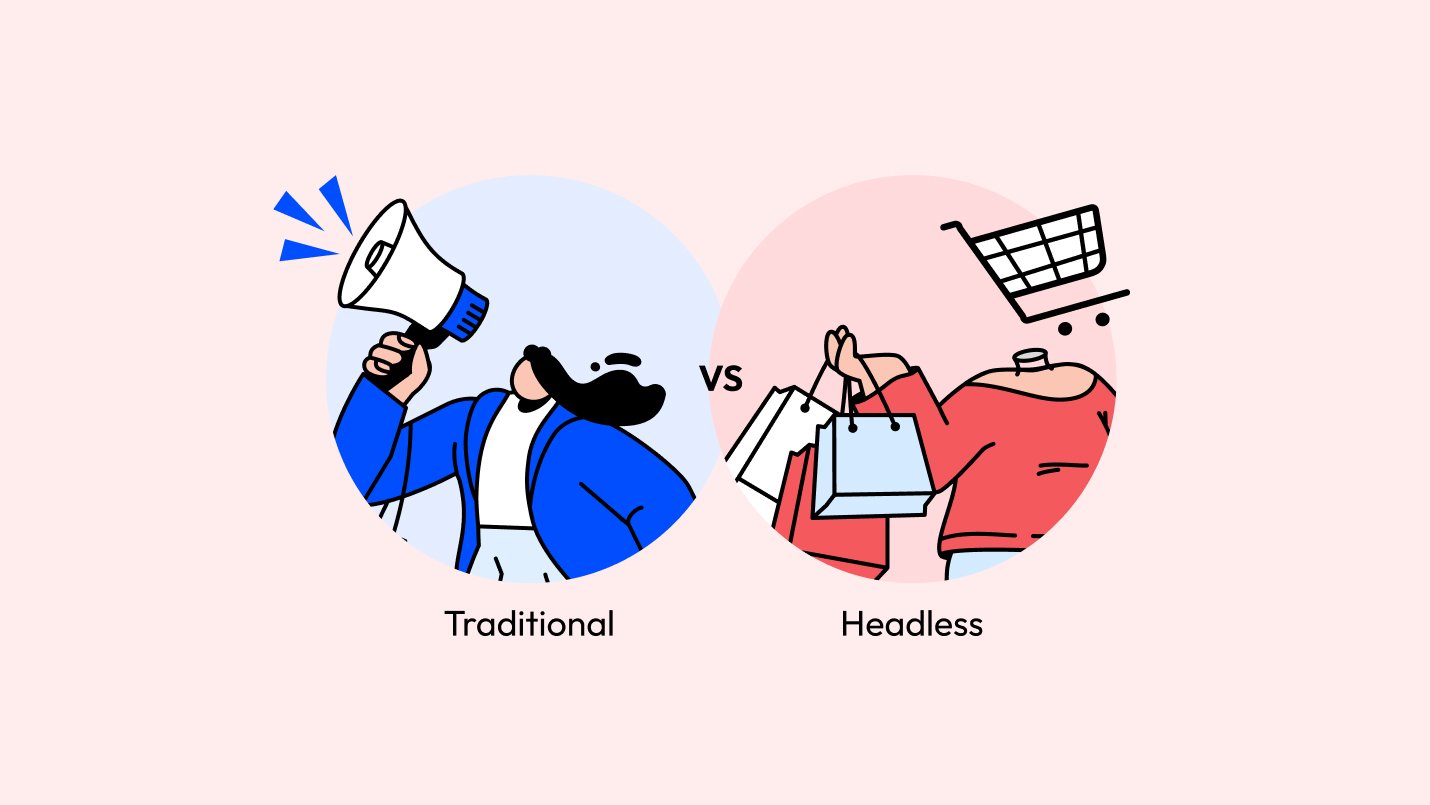The technologies that power today’s digital experiences are changing, powering the high quality experiences across channels that today’s consumers and buyers are demanding. If you work in eCommerce, you probably have heard the terms “headless” and “headless commerce,” paired with opportunities for agility, omnichannel sales, and scalability. But what does headless actually mean, and is it right for you?
Today, only 22% of retailers have implemented headless commerce solutions, but another 63% are planning to, according to Market Digits. In this guide, we’ll help demystify headless commerce, helping you:
- Understand the differences between traditional commerce vs headless commerce
- Clarify the pros and cons of each approach
- Factors you should consider to help you know which approach is right for you
- Move forward with evaluating headless commerce platforms
What is Traditional eCommerce?
Traditional eCommerce is how eCommerce got its start, where a single platform is used to both interact with customers (front-end) and manage business operations (back-end). Due to this tightly coupled nature of the front-end or back-end, you sometimes hear of traditional eCommerce referred to as “monolithic” or “single-tier,” since it is one big code base to manage everything from a fixed user experience.
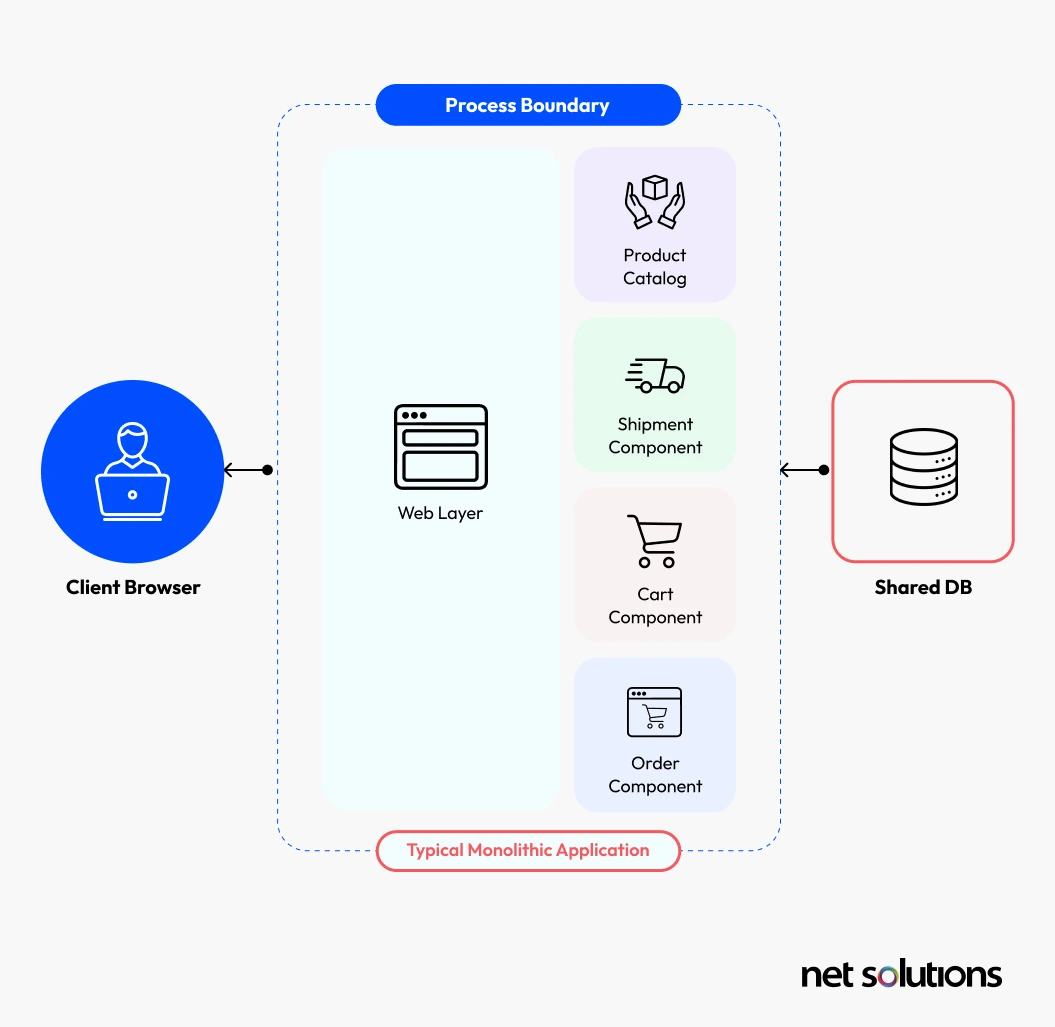
Traditional eCommerce key features
One of the best ways to understand traditional commerce is through how you interact with it. If you were to launch your online store, you’d have one admin interface and from that interface you would manage your whole store (from design to inventory).
Other features of traditional eCommerce platforms:
- Monolithic architecture: The front-end and back-end are one system, one code base
- Limited flexibility: tight coupling means that changes made to the front-end features often require changes to the back-end, limiting how quickly you can change features or add technologies. Further, a failure in one component can impact the whole system.
- Centralized management for site design, content, product management, features
- One theme is shown everywhere (website, mobile, IoT)
- Simple and less expensive to implement
What is Headless Commerce?
Headless commerce is an evolution of commerce infrastructure that decouples (separates) the front-end (the storefronts) from the backend systems that operate the store, connecting from front to back via API communication.
Headless commerce is designed to introduce more flexibility in making changes and to do so without impacting the whole system. Headless commerce often involves creating more than one front-end, each specialized to sell to a specific channel (e.g. website, mobile, social), but all leveraging and in sync with a common back-end infrastructure.
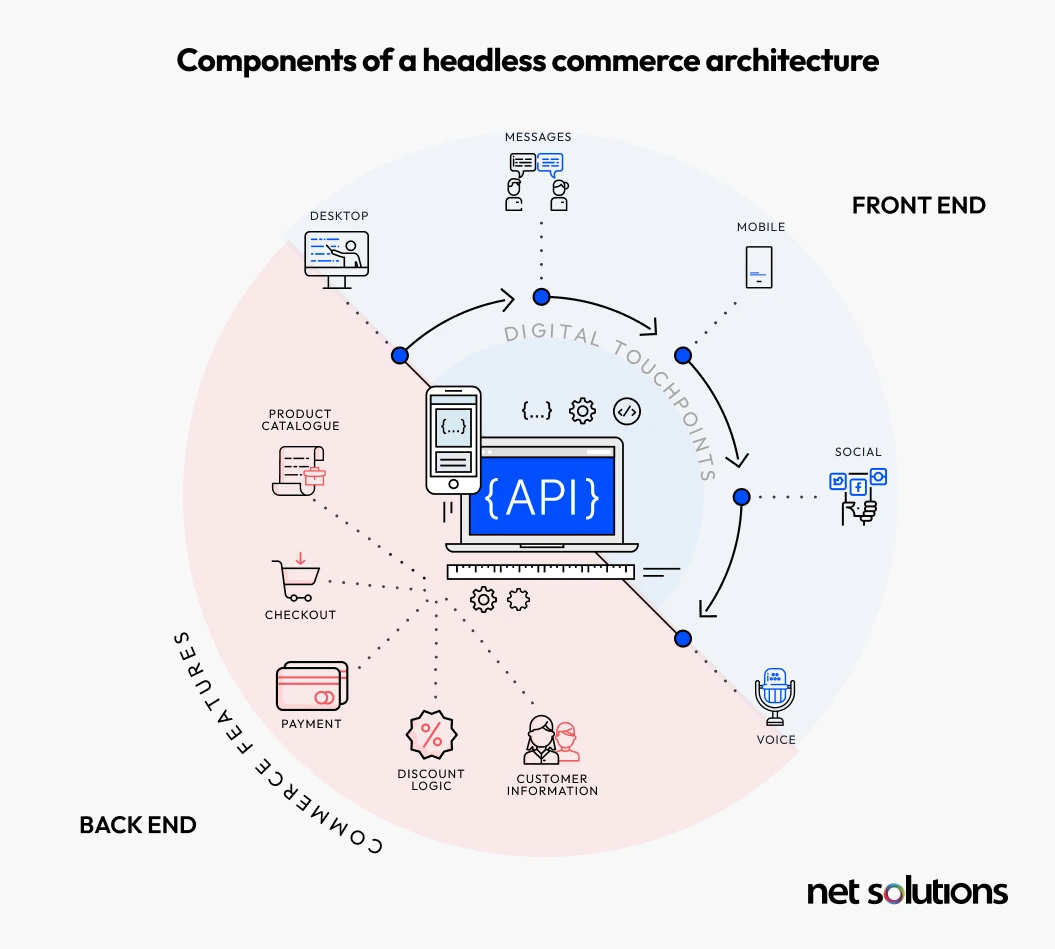
Headless commerce key features
Headless commerce can be described by the following features:
- Front and back-end separated and connected by API. The back end may also include microservices that allows for best-of-breed customization, but not all headless commerce solutions leverage microservices.
- Built to serve multiple front-end channels, devices (limitless) or products (e.g. apps). Though this increases development time, it frees developers from the restrictions of templates and instead allows for freedom in choosing the front-end stack(s).
- Tech stack freedom, choosing languages, frameworks and libraries that best suit the needs
- Optimized for performance, personalization and experience on each channel/front-end
- Resilient to change, as changes in the front-end do not impact the back-end (and vice versa)
The next stage of headless commerce evolution is composable commerce, where the front-end and back-ends are further modularized for greater control over the base components of the tech stack. To learn more, read our analysis of composable commerce vs headless.
What Are the Differences Between Traditional and Headless Commerce?
Side-by-side, let’s examine how traditional vs headless commerce impacts front-end development, customization and optimization, system agility, and scalability:
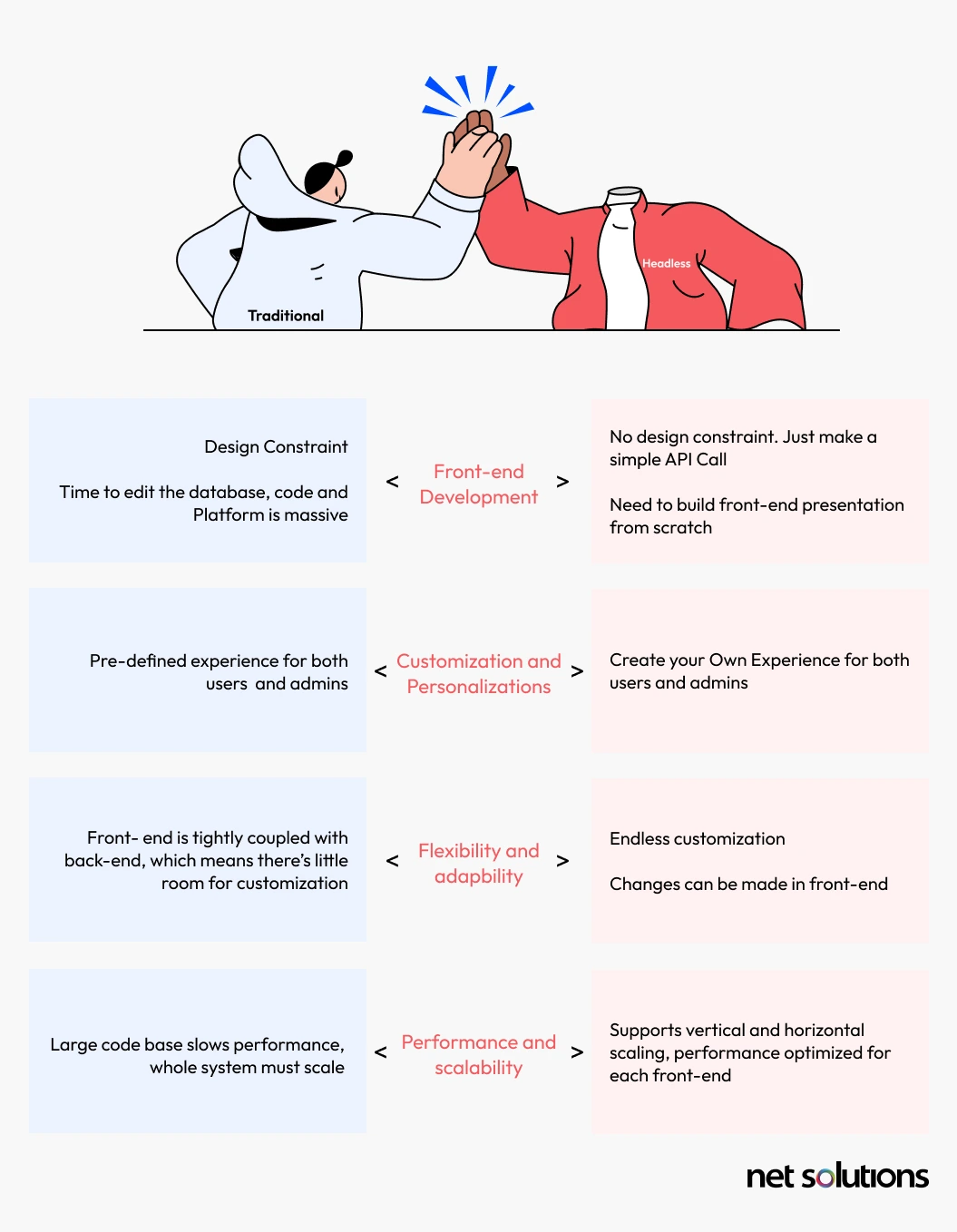
While there are significant differences between traditional and headless commerce, the choice between the two is tied to your business needs and size. Let’s examine how you could make a choice between headless and traditional eCommerce.
Headless vs Traditional Commerce: Pros and Cons
Headless commerce is becoming more popular for both business-to-consumer (B2C) and business-to-business (B2B) sales because of the potential upsides of increased flexibility and agility.
The pros of headless commerce
Today, 80% of businesses believe that headless architecture helps provide a competitive advantage when delivering new digital experiences, according to a WP Engine report on the State of Headless.
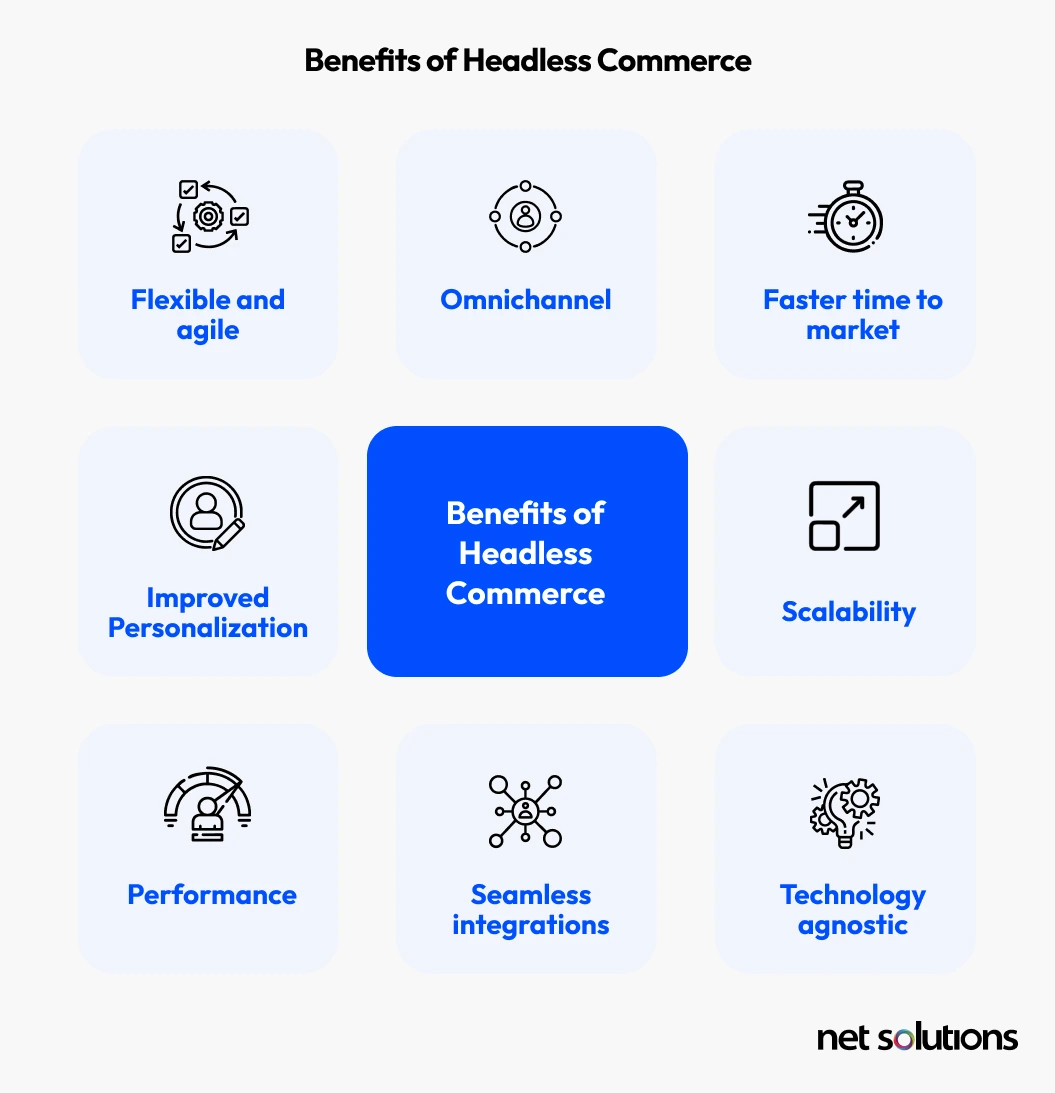
Some of the benefits of headless commerce include:
- Flexible and agile: Create rich digital experiences for each channel, with unlimited ability to scale to new channels.
- Omnichannel: Reach customers wherever they are, with a single back-end that keeps data in sync and can follow users across channels, delivering the best experience on each channel.
- Faster time to market: Make changes to the back-end, add features, or extend services via API without impacting front-end performance, with changes immediate across all channels. Allow teams to work on the front-end and back-ends simultaneously.
- Improved personalization: Have greater control over creating custom experiences for customers across channels and devices, instead of using a single theme (traditional eCommerce).
- Scalability: Scale to new channels (horizontal scaling) and allow the back-end and front-end to scale independently in response to traffic (vertical scaling).
- Performance: Leaner frontends and content reuse helps optimize performance.
- Seamless integrations: Centralized data from systems of record, integrate with new front-ends, and extend platform capabilities with third-party services with the flexibility of APIs and plug-and-play marketplaces.
- Technology agnostic: Choose different technologies, frameworks and languages for front-ends.
Learn more about the key benefits of headless commerce, including how some of these benefits translate into improved KPIs and a competitive advantage in the marketplace.
The pros of traditional commerce
While the above reasons are very compelling for large and growing businesses, there are reasons that traditional commerce continues to be used by a wide variety of businesses:
- Quick and easy to deploy: You can start and deploy a traditional commerce website in minutes, since everything is bundled into one platform and you only need to make changes to one theme. Of course, the greater your store complexity (number of SKUs, level of customization, number of locations), the higher your development cost.
- Simplified management: With tightly coupled systems, you manage all aspects of the store (design, content, features) in one single system.
- Well supported: Traditional platforms are well-established, with large communities for support
- Built in CMS: Most traditional platforms offer a built-in CMS to allow marketers to easily update content.
The cons of headless commerce
There are many benefits to headless commerce, but headless may not be right for all businesses. The following cons should be taken into consideration before starting with or replatforming to headless commerce:
- Increased development cost: Maintaining multiple front-ends increases the number of developers you may need (for each tech stack) and the operational expense of developing and maintaining each front-end.
- Technical complexity: Instead of working with a single system, headless commerce requires knowledge of working with a chosen back-end commerce platform, knowledge of APIs, and knowledge of front-end tech stacks. Each component must be managed and monitored for performance and security.
- Technical expertise required: For small brands, this can make headless commerce inaccessible, while larger organizations may still require bringing on new IT staff or working with experienced partners.
The cons of traditional commerce
- Design limits: Limits are based on themes and available components, traditional platforms may require more intense development and overrides to create custom experiences (one type of experience for all channels).
- User experience customization is limited: You choose a theme for your website, and this same design is shown everywhere else (mobile, IoT), with difficulty changing themes, features or technologies. While responsive frontends do attempt to deliver a ‘better’ experience across devices, these experiences are not ‘customized’ with different UIs.
- Slower time to market: Changes in the back-end impact the front-end, requiring more development effort and risking potential downtime for system refresh.
- Channel expansion is limited by system design: Delivering custom experiences may require separate technology stacks (e.g. for apps), increasing development time and risking back-end data going out of sync.
Factors to Consider When Choosing Between Traditional and Headless Commerce
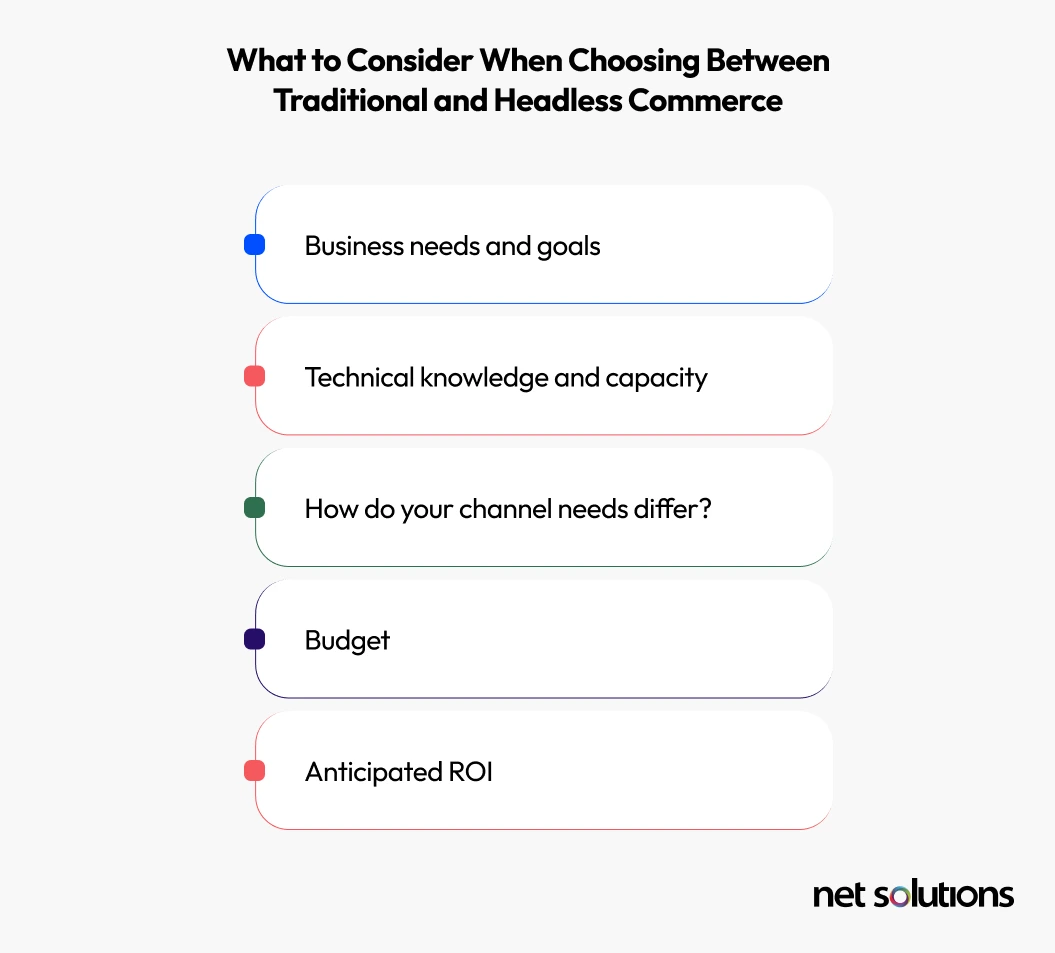
When deciding on traditional eCommerce vs headless commerce, the following are things you should think about to determine which is the right fit for you:
- Business needs and goals: Does your business benefit from selling across channels, how complex is your sales process (particularly for B2B), what are the needs and expectations of your audience, what kind of competition do you face or expect to face? What is your short and long-term growth plan and how does eCommerce fit in?
- Technical knowledge and capacity: Do you have the internal IT staff or capacity to take on replatforming or starting with headless? Do you have the ongoing capacity to manage additional complexity? Do you know how to hire an experienced eCommerce partner?
- How do your channel needs differ? Would a customized front-end experience greatly alter the experience for users, or can you get away with using a responsive front-end on a traditional commerce system?
- Budget: Do you have the budget to expand your team, work with an agency partner, or meet the increased maintenance requirements of headless?
- Anticipated ROI: Will the cost of going headless be offset by a return on investment in terms of higher conversion, higher sales, better customer lifetime value?
In the next section, we’ll examine the weighted factors that should push you toward traditional or headless commerce.
When Should I Choose Traditional Commerce?
You should choose a traditional commerce platform if you are:
- An entrepreneur or small business with only a small product volume, with no plans to multiple storefronts (across locations, brands, segments).
- Small or boutique market, serving a small market with limited competition or a very niche segment of the market that may have lower competition.
- Limited customizations required, you only want a simple site with very few features or customizations across channels.
- Limited resources, with either no technical team or a very small IT team that lacks the knowledge or capacity to run a headless commerce system. Limited resources can also apply to the cost to run headless or work with an external agency partner.
- Quick time to market required: You need to quickly get to market with a managed site with few customizations. You may consider replatforming to headless soon after or not at all.
Next, let’s look at when you should choose or consider moving to headless commerce.
When Should I Choose Headless Commerce?
If you are a large organization establishing a new eCommerce venture or are an established B2C or B2B company currently using a traditional eCommerce platform, you should consider headless technology when:
- You are a larger or more complex business, potentially with large catalogs, high competition, or serving multiple storefronts (brands, locations, segments).
- You are experiencing high growth, requiring a platform that can meet your needs for performance and scalability.
- Agility is paramount to success, with your ability to respond to customer expectations, innovate with new features, or expand your business quickly.
- You face steep competition, as your consumers or buyers are highly influenced by experience and performance and will switch brands easily based on poor experience.
- You have many systems of record, such as CRM, ERP, inventory management and need a system that can better integrate with them
- You have a large retail business, particularly those targeting Millennials, which increasingly relies on the ability to capture using social channels, with social commerce now at 6.6% of total eCommerce sales, according to eMarketer.
- Resources are not an issue, with either the internal team capacity or the capacity to leverage an experienced partner to supplement or fully develop and manage your headless commerce store.
If you are a B2B business, we have put together a more detailed look at the benefits of headless commerce for B2B.
Which Headless Commerce Platforms Should I Consider?
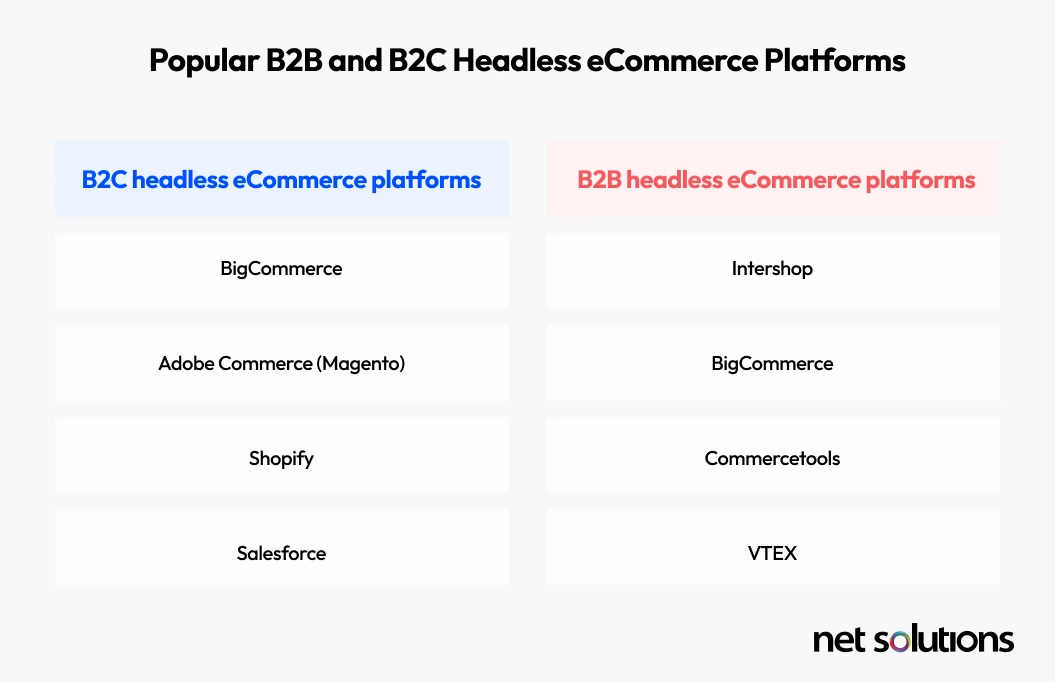
While you may be familiar with traditional platforms such as WooCommerce, WordPress or Shopify, it may not always be obvious which eCommerce platforms are headless.
When evaluating headless commerce platforms, it’s critical to differentiate between platforms that support B2C sales and those that stand out for B2B sales. While many platforms offer both, our top rankings for each are:
B2C headless eCommerce platforms
- BigCommerce: An easy-to-use SaaS platform known for supporting medium organizations to large multi-brand, multi-region, multi-site organizations with recent innovations in AI
- Adobe Commerce (Magento): Known for its capacity to scale very large enterprises, with capacity to support hundreds of storefronts and the latest innovations in personalization
- Shopify: An easy-to-use platform for small to large enterprises with easy to use tools and a proliferation of managed services in sales and marketing
- Salesforce: available as tightly coupled with its CRM, Commerce Cloud supports rapid setup and AI-driven personalization and workflow automation
B2B headless eCommerce platforms:
- Intershop: Built for B2B commerce, rich business tools to support omnichannel experiences for wholesalers and manufacturers
- BigCommerce: A leading headless solution with an open-source buyer portal and recent innovations in AI
- commercetools: a headless composable solution with comprehensive B2B support in marketplaces, protracted buying processes, and buyer-specific pricing
- VTEX: A headless, composable platform designed to deliver scalable digital experiences with unification of sales and fulfillment operations
Learn more in our comprehensive guide to the top 10 best headless commerce platforms.
Over To You!
Today’s state of commerce is not as linear as it once was, with 80% of customers saying the experience with a company is as important as the product or service, according to the State of the Connected Consumer report. Today, 61% of consumers and 78% of B2B buyers expect brands to adapt to their changing needs and preferences, the same report noted.
If you are facing the pressure to adapt, deliver on experiences, or meet customers where they are (which is on an average of 10 channels), headless commerce is poised to help you get there.
As an eCommerce development service agency with over 15 years experience, we know that eCommerce success requires a deep understanding of customer needs and the latest innovations in commerce technology. At Net Solutions, we work to develop eCommerce solutions ranging from single-product sales pages to large multinational omnichannel experiences for leading retailers such as American Golf, Jaypore and Legend Footwear and leading B2B organizations including Euro Car Parts and IMG.

